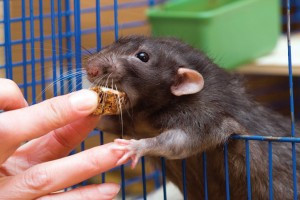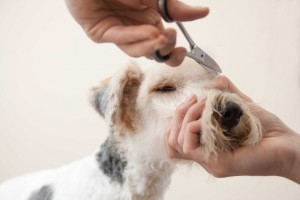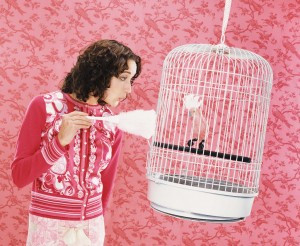The first store a small business pet retailer has opened is running well. It’s successful and they are finally living out their dream. The thought of opening a second location becomes a possibility, but should it be done?
The first option is to expand or make renovations to the current store. If the store is the appropriate size and all the merchandise can fit in, then the store may just need a new look. Other times, the current store space has been outgrown and it’s time to move to a larger location.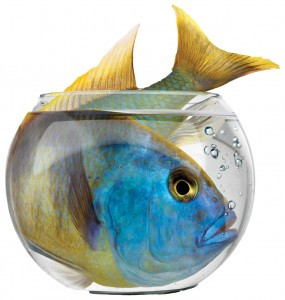
The second option is to open a second store, and effectively doubling the amount of work the retailer has to do.
“The right time is going to be really specific to each person, each individual and the circumstances,” Michael Levy, founder and president of Pet Food Express, said. “There are so many factors that go into expansion. First, you need to really want to expand. It’s not a given that everyone wants to expand.
“For people that are considering expansion, it doesn’t have to be to open more stores, just improve what you have. Sometimes it’s just a relocation that you need, but it all will take planning. First you need the vision for it, then to start planning it.”
Levy started as a dog trainer in college and opened a physical location in 1976. In 1980 he opened his second physical location. Since then, he will have 50 stores by the end of the year.
“Adding the first couple of stores is critical,” Levy said. “When you think in terms of adding the second store, you are doubling your business. Further along you get, the less the impact is. We opened store 48 and want everything to run smoothly but if it fails, I have 47 other stores to absorb that. The same can be said if you’re doing a major remodeling job.
“The greatest asset that any independent retailer has is their ability for customer service. They can outperform any national chain, and most regional chains. They can’t lose focus on that, they should not lose focus on that.”
Madalyn Moorman, the founder and owner of Mad 4 My Dog, is a dog trainer who started her business in 2004.
“I was originally doing everything myself in a building on my property,” Moorman said. “Now, within the past year, I have an office manager, three other trainers and an intern. I decided to move to help gain visibility in the community.”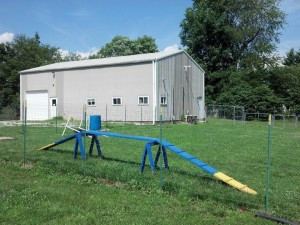
Moorman has spent a great deal of time in the community talking to different people, going to different groups to learn more about the big move she’s about to take.
“I have gone to a CEO roundtable at the local community college, gone to the Indiana small business development center for information, the city and county planning department and my friend who is a realtor,” Moorman said. “Any question I may have, I go out there and find the answer for it.
The biggest struggle that Moorman has faced so far is taking the leap of faith that the business will run and be successful.
“I can look at all the numbers all day long, the projections all day long, look at all of it all day long,” Moorman said. “But at the end of the day there is no way of knowing what will happen. Knowing that I have to take a leap of faith is difficult for me, probably the most difficult thing for me. But I am just trying to get prepared as much as I can and do everything I can to be successful and if I fail, that’s OK. As long as we did everything we could to make it successful. It would be worse if we didn’t do it and sat around wondering what could have been.”
Getting Started
Giovanni Senafe, co-owner of Bentley’s Corner Barkery has done it both.
“We started with our first location at Arlington Heights, Ill.,” Senafe said. “We knocked down a wall and grew that location. A year and a half ago we opened a second location in Schaumburg that’s double the size.”
Senafe decided to make the original space bigger after he simply ran out of space.
“The benefit of starting small was that our overhead was low and it was a safe play,” Senafe said. “Eventually we just couldn’t meet the demands of our customers, especially with food lines growing. Once we were saying no to more customers than saying yes, we knew we had to expand.”
Senafe said the expansion was easy and they knew they were answering a need that was provided from their customers.
“The new store was scary,” Senafe said. “Everything was a huge gamble from day one. Whatever success we had in the original store we needed more of since it was a bigger location. It was scarier than the first store because we didn’t know any better. We have people who support their families that work for us and when we were opening the first store it was just me and my wife that we were gambling on.”
His advice is to be open to what the customers are telling you and what the market bears.
“You have to have your beliefs of how the store should be,” Senafe said. “You have to have boundaries but be willing to carry certain things. That’s something we learned in the beginning. We thought raw food was all we were going to sell but we kept getting asked for all these other things, it’s not just your decision, it’s your customers.”
Even though a store owner may have everything planned for their store, the unexpected may creep up.
“We run and own our own distribution facilities,” Levy said. “We have had a warehouse for many years, starting from a basement to now a 147,500-square-foot warehouse. We have moved probably seven or eight times since the beginning, but 12 to 15 years ago we moved around the holidays. We moved to a larger, really nice facility at the time. When we moved and did all these changes, our computer system crashed and we could not use a computer to locate anything in the warehouse. So during the holidays we were running up and down the warehouse and locating the product by sight, then putting it into our SUVs so we could run it into our stores. This seemed to go on for weeks.”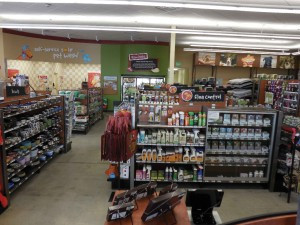
Besides technical malfunctions, there is also the chance for human error.
“The store problem I remember the most is, I think it was store number seven,” Levy said. “We got a really good deal from a manufacturer for dog food and needed a lot of it in the store. It literally filled up the store and we had to put it back in the parking lot. We had a fork lift at the time, we don’t allow them in the store anymore. On Friday night, we were opening the store the next day; someone drove the fork lift through the doors. We had to chain it up and had to open the store with the doors chained up. We fixed it all up and then the next week at around the same time, the same thing happened; someone ran the forklift through the door again.”
Experts and Advice
Troy Hazard, international business consultant and entrepreneur, has opened outlets and branches for his business all over the country in Australia, New Zealand and the United States.
First, he says, you must look for a gap or a market opportunity.
“Let’s just say you have an outlet in Austin, Texas, you have done as much with that market as you can,” Hazard said. “You have reached market saturation for that area. The next opportunity is to take on an additional area. The key to understanding if it’s a right time to know is if there is a market gap in the other place, like San Antonio for example. Before you open that second outlet in a place that seems right for your business, spend some time on the ground. Really go walk around out there. Put your feet on the pavement and really understand what the market is doing out there on a first person perspective.”
When opening a second store, Hazard said you have to take a look at what’s close by.
“The challenge with stores that are far apart is that you can’t avoid not traveling to that location,” Hazard said. “You have to look at the geography of where you are. What makes it easy for you to expand your footprint without killing you? Until you can hire someone to help you, you will have 12 months of doing it yourself, at least. If you are in Austin still and want to open in San Diego, Calif., that’s not realistic since you will have to spend so much money and time on travel.”
When Hazard talks to businesses about expanding, he has the retailer take a hard look at their existing market to make sure they have reached every possible customer and gotten as much money from them as possible.
“A big problem is people want to expand more to have a bigger title, or sound more important or update their business card with all these locations on it,” Hazard said. “You need to park your ego at the door, make sure the expansion is strategic and not for your ego. Make sure you get every penny from all the customers you can. The next thing is to have a system, or processes or strategies that you used in the first outlet that you can duplicate to the second place.
“You don’t want the second outlet to feel like the red-headed step child. Outlet two, three, four and so on, they should all feel like they belong to the corporation, that they are a part of the family. The last step is you have to be comfortable enough to let your leaders lead. If you employed the right people to manage your places, you have to let them take control.”
Lastly, Hazard said is that each store must be treated as a separate business.
“Each store must be able to stand alone,” Hazard said. “Don’t make one child sick to save another. If opening a second location is to prop up the poor performance of the first location in the belief that ‘this one will be better’ then you are only going to drag both of them down.”
Where to Build
Levy’s advice is that site selection can make or break the success of the store.
“It is so critical and so many factors that come into that,” Levy said. “Picking the right location is so important, as is negotiating the right price. They are all pieces: finding the right place, negotiating, and the staff, and capital, money, to open your store and keep it running till it’s paying for itself. If you have one store and are opening the second, it’s easy to only focus on the second one. It’s important to let your employees know and your customers know that the first store is still important.
“Get a commercial real estate agent that you trust. You have to know where to look and you will need help with that, also with negotiating the lease. The lease I signed for the store in 1980 was the landlord handing me some papers, I looked at the pages and then signed the last page. That’s how I think people think it works and how people do it. You should go through it and make sure it’s fair for you and the landlord, we could take months to go through it.”
Senafe keeps an old business saying in mind to help him with choices.
“Paralysis by analysis,” Senafe said. “If you are looking for a perfect time to expand or open another location, you will never find it. You will always find a reason not to do something. You have to set a reasonable safety net and if you know there is a certain amount that goes wrong you can’t pass it and you will have to cut your losses.”
Financial Advice
While going to a bank is always an option, there are companies such as Newtek that provide financial services and business services to independent business owners.
Barry Sloane, the CEO of Newtek, a small business lender, eCommerce provider, website developer, 50 state licensed insurance agencies for property, casualty and health insurance, that process electronic payments for small businesses, store data and lends money to resellers and wholesalers.
“We are a nonbank lender and the biggest government guaranteed non-bank lender in the United States,” Sloane said. “The primary difference between Newtek and a bank is we do not take deposits and have less oversight and regulation as a lender. The primary difference to our borrows and clientele is that 100 percent of the company’s focus is in dealing with small to medium size independent businesses. We are much more customer friendly to our clients than the typical bank lending relationship.”
Sloane said in order to expand, a business should have a minimum three year plan going forward which should be extremely granular and estimates all costs of the expansion and the growing revenues at a minimum month by month.
“In order to expand, a business should have a minimal three year plan going forward which should be extremely granular and estimates all costs of the expansion and the growing revenues at a minimum month by month,” Sloane said. “In working with small business owners, we would strongly recommend having all their data in a military strength-proof facility warehoused and available in the cloud. We would strongly suggest businesses make sure they have state of the art electronic payment processing and eCommerce solutions. We would also suggest business owners rebid all their health insurance costs in front of Obamacare taking effect in 2014, as well as reevaluate all their property and casualty insurance. We endeavor to help businesses manage and reduce their expenses and have state of the art effective technology and systems.”


